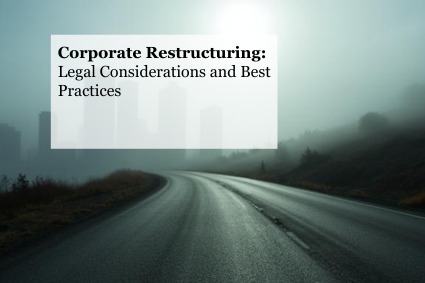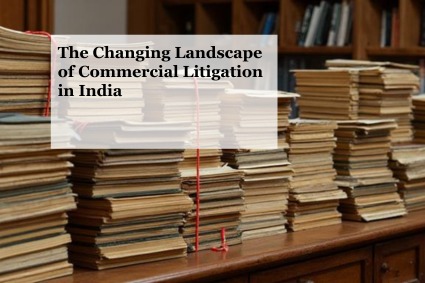Neutralising quasi-judicial vacuum with a purposive approach – SAT’s decisive judgement against alleged constitutional deficiency

The seminal judgement of Securities Appellate Tribunal (“SAT”) on May 17, 2021, in the case of Axis Bank Ltd. v. National Stock Exchange of India Ltd, Securities and Exchange Board of India and Karvy Stock Broking Ltd highlighted the issue of the prevalent vacancy in the composition of SAT and the resultant adversities.
SAT’s existing composition consists of only a Presiding Officer and a Judicial Member as opposed to the legislative position envisaged under proviso to Section 15L(2)(b) of the Securities and Exchange Board of India Act, 1992 (“SEBI Act’”) which states that every Bench constituted by the Presiding Officer of the SAT shall include at least one Judicial Member and one Technical Member. At present, the Technical Member is unavailable as he has demitted office on March 31, 2021. Considering the given facts, Securities and Exchange Board of India (“SEBI”) has questioned the legitimacy of the current composition of SAT to hear appeals filed before it.
The primary contention of SEBI lies on the fact that every Bench must have at least one Technical Member and since the current Bench is composed of only Judicial Members, the constitution of the Bench is defective, and orders passed by the Bench would be coram non judice, meaning “not before a judge” or without proper legal jurisdiction.
SAT took notice of the grievance and decided to rule its own jurisdiction professing that proviso to Section 15L(2)(b) must be construed harmoniously with the other provisions of the SEBI Act. If literal interpretation results in defeating the purpose of a statute, such literal interpretation must give way to purposive interpretation. Reference was made to “the cardinal principle of construction” asserting that the process of interpretation combines both literal and purposive approaches while reiterating the “mischief rule” expounded by the Supreme Court.[1]
SAT took an overview of the legislative history of the composition provisions as originally envisaged under Section 15L, substitution by Finance Act no.7 of 2017 and a Notification dated May 16, 2019 (“Notification”), issued by the Central Government regarding the strength of the SAT. The Notification proposed the consistence of four persons, namely a Presiding Officer, One Judicial Member and Two Technical Members. Further, Section 15L(2) prescribes that a Bench may be constituted by the Presiding Officer of SAT with two or more Judicial or Technical Members as they “may deem fit” subject to other provisions of the SEBI Act which indicates that this provision is directory in nature and not mandatory.
The other relevant provisions in this regard are:
Section 15-P. Filling up of vacancies– If, for reason other than temporary absence, any vacancy occurs in the office of the Presiding Officer or any other Member of a Securities Appellate Tribunal, then the Central Government shall appoint another person in accordance with the provisions of this Act to fill the vacancy and the proceedings may be continued before the Securities Appellate Tribunal from the stage at which the vacancy is filled.
Section 15-PA. Member to act as Presiding Officer in certain circumstances–
In the event of occurrence of any vacancy in the office of the Presiding Officer of the Securities Appellate Tribunal by reason of his death, resignation or otherwise, the senior-most Judicial Member of the Securities Appellate Tribunal shall act as the Presiding Officer until the date on which a new Presiding Officer is appointed in accordance with the provisions of this Act.
Rule 5(2) of the Securities Appellate Tribunal (Procedure) Rules, 2000
“In the temporary absence of the Presiding Officer, Government may authorise one of the two members to preside over the sitting of the Tribunal either at a place where its office is situated or such other place falling within its jurisdiction as it may deem fit by the Appellate Tribunal.
Interpretation Employed by SAT:
Section 15P provides that proceedings may be continued before the Tribunal from the stage at which the vacancy is filled. The contention of SEBI is, that when a vacancy occurs, the Tribunal becomes non-functional and can become functional and can restart the proceedings only when the vacancy is filled up.
This contention is incorrect in view of Section 15-PA which provides that in the event of a vacancy occurring in the office of the Presiding Officer of the Tribunal then the senior most Judicial Member will act as the Presiding Officer until a new Presiding Officer is appointed. Thus, the Tribunal would continue to function even if there is a vacancy in the office of the Presiding Officer.
Similarly, if a vacancy of a Member occurs whether it is a Judicial Member or a Technical Member and if there is a coram in spite of a vacancy, the Tribunal can proceed and hear the matters. Rule 5 also provides that in the absence of a Presiding Officer the Government can appoint one of the members to preside over the sitting of the Tribunal, meaning thereby, that even in the event of a vacancy, the Tribunal will not become non-functional and will continue operations with remaining members.
Section 15R. Orders constituting Appellate Tribunal to be final and not to invalidate its proceedings.
No order of the Central Government appointing any person as the Presiding Officer or a Member of a Securities Appellate Tribunal shall be called in question in any manner, and no act or proceeding before a Securities Appellate Tribunal shall be called in question in any manner on the ground merely of any defect in the constitution of a Securities Appellate Tribunal.”
Interpretation Employed by SAT:
Section 15R protects the legality and validity of the orders passed by SAT even if any subsequent defect is found in the constitution of the Tribunal. This provision clearly indicates that the Section 15L(2)(b) and its proviso are only directory in nature and cannot be mandatory.
Realistically, the constitution of the Bench as envisaged in the proviso to Section 15L(2)(b) may not always be met, and in such an event, the constitution of the Bench shall be immune from being called in question. Section 15R would have the effect of qualifying and treating the word “shall” in the proviso to Section 15L to mean “ may” or “as far as possible” that is to say, that there shall be at least one Judicial Member and one Technical Member in every Bench where such members are available and, where such members are not available it would not be a mandatory requirement to be met with and by law and the Presiding Officer shall be required to constitute a bench as he deems fit from the members available. Thus, Section 15L(2)(b) is directory in nature.
SAT therefore asserted that the impugned proviso to Section 15L(2)(b) has to be construed harmoniously along with the other provisions in order to promote the cause of the investors under the SEBI Act and that the intention of the legislature cannot be construed in a way that it stalls or renders SAT non-functional in the absence of a Technical Member as the Technical Member’s contribution is understood to be confined to cases where technical guidance or specialised knowledge is needed and therefore, a harmonious construction is to be given for the benefit of the aggrieved stakeholders.
It was also held that any contrary position to designate the Tribunal as non-functional on account of a vacancy even though the coram exists would be in complete violation of the right to access justice as guaranteed under Article 21 of the Constitution of India in line with the judgement in Anita Kushwaha v. Pushap Sudan, (2016) 8 SCC 509.
Relying on precedential value, SAT quoted a series of favourable judgements upholding similar legal positioning. Some of the notable ones are reproduced below:
- Gulzari Lal Agarwal vs. Accounts Officer (1996) 10 SCC 590:
An order under the Consumer Protection Act, 1986 was passed by two Members of the State Commission. The National Commission held that the order passed by the State Commission was illegal and void as it was passed by two Members without the President which was contrary to the mandatory provision of Section 14(2A) read with Section 18 of the said Act.
The Supreme Court reversed the decision of the National Commission holding that in view of Section 29A of the said Act, the order of the State Commission will not be invalidated merely because there was a vacancy in the State Commission. The Supreme Court held that relevant provision must be construed harmoniously to find out the intention of the legislature and to promote the object and spirit of the Act.
Accordingly, Section 29A of the Consumer Protection Act can be equated to Section 15R of the SEBI Act.
- Mylan Laboratories Limited vs. Union of India & Ors.
The post of a Technical member fell vacant and the Appellate Board under the Trade Marks Act, 1999 could not take up any matters on account of lack of coram. Section 84 of the Trade Marks Act provides a stringent condition that a Bench of the Appellate Board shall consist of one Judicial Member and one Technical Member. The Delhi High Court invoked the doctrine of necessity holding that the Appellate Board could proceed and hear urgent matters and orders passed by the Appellate Board would not suffer any invalidity on account of lack of coram.
- International Association for Protection of Intellectual Property India Group) vs. Union of India, 2021 SCC OnLine SC 89
The Supreme Court interpreted Section 84 of the Trade Marks Act, 1999 holding that in the absence of Technical Member the Chairperson can discharge the functions of a Judicial Member or Technical Member of the Bench.
- Sandeep Jain vs. Union of India (Writ Petition no.5847 of 2017)
The Division Bench of the Bombay High Court was dealing with the earlier version of Section 15L of the SEBI Act on a question as to whether the absence of a Presiding Officer would preclude SAT from exercising its jurisdiction. The controversy raised at that time was that the then Presiding Officer of the Tribunal had retired and the Central Government acting under Rule 5(2) of the Securities Appellate Tribunal (Procedure) Rules, 2000 designated one of the two members of the Tribunal as the officiating Presiding Officer.
A writ petition was filed praying for prohibiting any of the Members of SAT from functioning as the officiating Presiding Officer of the Tribunal. The Bombay High Court in its decision held that the temporary absence contemplated under Rule 5(2) and Section 15P means that the arrangement under which one of the two Members is to preside over the sitting of the Tribunal is to be made on a temporary basis and not on a regular basis and, consequently, dismissed the writ petition holding that the Appellate Tribunal can proceed and decide the appeal of the petitioner as there was no impediment in its functioning.
Countering the position, the SEBI had also quoted a series of deflecting judgments. The Tribunal dealt with the contrary judgements as follows:
- Subash G. Narvekar & Ors. Vs. State of Goa & Ors. (2005) 6 BomCR 361
- Madras High Court in Kama Unni vs. Rama Kudumban & Ors. 1952 (65) LW 1063
- S. Manoharan vs. The Deputy Registrar, Central Administrative Tribunal and Ors
The aforesaid decisions were held distinguishable on facts.
- Roger Mathew vs. South Indian Bank Ltd.
- Union of India vs. R. Gandhi President, Madras Bar Association (2010) 11 SCC
Relying on above decisions, the submission of SEBI was that the presence of a Technical Member is essential and mandatory and that a Bench of a Tribunal cannot function in the absence of a Technical Member. This contention was held to be untenable and misplaced.
It was pointed out that the Supreme Court has repeatedly held that the encroachment of judicial space by bureaucrats and government officials who get appointed as Technical Members dilutes and encroaches upon the independence of judiciary. Special reference was made to Roger Mathew (supra), where the SAT observed that this case neither dealt with the impact of the vacancy nor held that the presence of Technical Member was necessary for the Tribunal to function. On the contrary the Supreme Court reiterated its proposition in its earlier judgements that judicial functions cannot be performed by Technical Members who lack adjudicatory experience.
Describing the role of Technical Member, it was noted that that since, SAT performs judicial functions, it is mandatory for the Tribunal to be manned by Judicial Members. It is an essential requirement under the SEBI Act that the Presiding Officer is a Judicial Member. The Technical Member cannot replace a Judicial Member.
Further, inclusion of Technical Member is only to bring specialised knowledge. For the role envisaged under SEBI Act, a Technical Member cannot substitute the competence of a Judicial Member. A Technical member is merely an aid to assist the Bench requiring technical expertise on specific issues and, thus, it cannot be said that if a Technical Member is not available the Bench comprising of two Judicial Members cannot function.
Reiterating the importance of the judicial component in the composition of SAT, reference was made to L. Chandra Kumar vs. Union of India, (1997)3SCC261 in which the Supreme Court held that:
What is needed in a tribunal, which is intended to supplant the High Court, is legal training and experience, and judicial acumen, equipment and approach. When such a tribunal is composed of personnel drawn from the judiciary as well as from services or from amongst experts in the field, any weightage in favour of the service members or expert members and value-discounting the judicial members would render the tribunal less effective and efficacious than the High Court. The Act setting up such a tribunal would itself have to be declared as void under such circumstances. The same would not at all be conducive to judicial independence …”
In view of the aforesaid contentions, the SAT held that the functioning of the Tribunal presently comprising of a Presiding Officer and a Judicial Member is not defective on account of non-availability of Technical Member and that the Bench constituting the Presiding Officer and Judicial member can proceed to hear and decide the appeals, etc which are filed before it. The objection raised by SEBI was thus rejected.
SAT decided to further comment upon the appalling condition of vacant quasi-judicial offices and emphasized on prompt dual action by executive and judiciary. It was stated that the current adjudication is only a temporary solution, and the permanent resolution to the prevalent crisis is that Central Government should expedite and fill up existing vacancies. Attention was alluded to the fact that a fourth post of Technical Member was created vide Notification, but no steps were taken by the Central Government to fill up this vacancy. Inaction persisted even after the knowledge of the incumbent Technical Member’s retirement plans.
Immediate action in terms of the necessary amendments and resolving the discrepancy in the charging section to the proviso under Section 15L(2)(b) plus proactive executive action by requesting to fill up the vacancies at the earliest and consideration of making appropriate amendments by Ministry of Finance, Department of Economic Affairs and the Supreme Court of India to treat this order as a PIL to resolve the issue on the judicial side was propounded by the SAT.
W&B Take
A desperate need was recognized to overcome the hurdles of delay in administration of justice. Creation of tribunals has evolved as one solution in the ever-constant strive to increase access to justice. A ‘Tribunal’ can be understood as a body tasked with discharging quasi-judicial functions with the primary objective of providing a special forum for specific type of disputes and for faster and more efficacious adjudication of issues.[2]
Therefore, the quasi-judicial machinery was developed to supplement judicial functions for the dispensation of subject-specific justice in a swifter manner. SAT is the sole appellate body envisaged under the SEBI Act having the power to hear appeals against the decisions of SEBI. The normal functioning of SAT is quintessential for the aggrieved interests of the involved stakeholders.
As the Judiciary is equally marred by unsatisfactory composition evident from a staggering number of vacant judicial positions highlighted One Hundred Seventh Report on Demands For Grants (2021-22) of the Ministry Of Law And Justice, it becomes imperative for the quasi-judicial vacuum prevalent by force of circumstances to not hinder the critical adjudicatory processes parallelly running to address the long-drawn problem of an overburdened judiciary.
Therefore, in larger interest of providing easy access to justice, the directory nature of proviso to Section 15L(2)(b) should be crystallized in the form of a legitimate amendment in the SEBI Act or alternatively the composition envisaged under the Notification should be revised. The Judiciary may also responsibly take the baton to espouse the cause of justice and settle the controversy regarding Tribunal vacancy in the form of some uniform guidelines or decisive judgements.
In all, the judgment by SAT is a temporary remedy to a permanent wound. The questioning of SAT reflects poorly on the integrity of the legislatively established Tribunal and hence there is an urgent need to take corrective action in time.
[1] Bengal Immunity Co. Ltd. v. State of Bihar, AIR 1955 SC 661
[2] Roger Mathew vs South Indian Bank Ltd And Ors Chief
By entering the email address you agree to our Privacy Policy.



